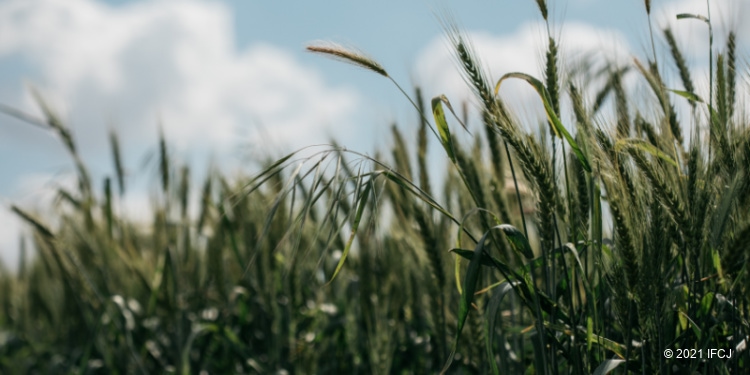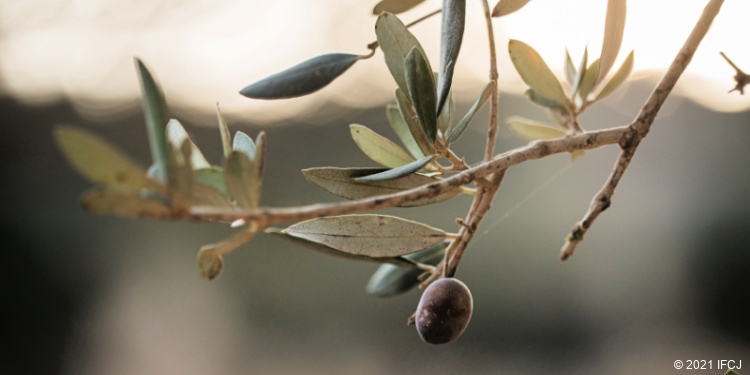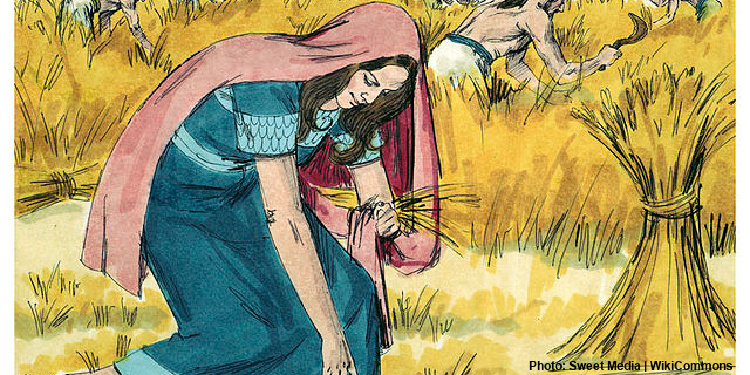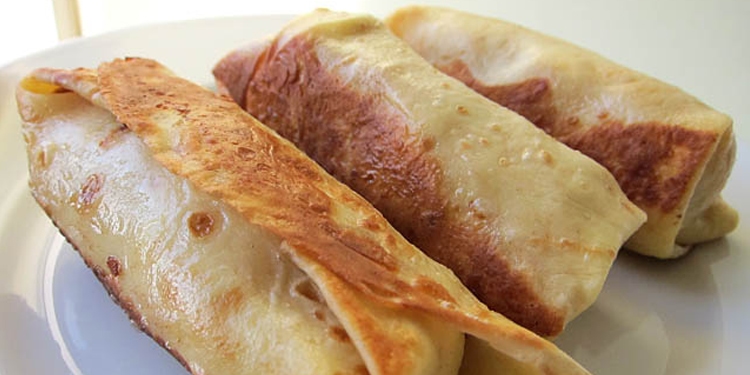What Is Shavuot — The Jewish Pentecost?
The Fellowship | May 18, 2023
Shavuot, the Jewish Pentecost, is a holiday that today commemorates the single most important event in Israel’s history: the giving of the Torah (the first five books in the Hebrew Bible) to Moses at Mount Sinai. Although it is not as well-known among non-Jews as Passover or Sukkot, the Feast of Booths, it is one of the three major festivals often called “pilgrim” festivals because in Bible times, all Jewish males were required to observe them at the Holy Temple in Jerusalem.
Christians will be more familiar with the Greek name for Shavuot, Pentecost — the holiday that Jesus’ followers were observing in Jerusalem when the Holy Spirit was given to them. Since Pentecost is the Greek word for 50, and as Shavuot occurs 50 days after the first day of Passover, it was referred to as Pentecost in the Christian Bible.
The holiday is also known as the “Feast of Weeks,” since it is celebrated seven weeks (or 50 days) after Passover.
When Is Shavuot?
This year, Shavuot begins at sundown, May 25, and ends at sundown on May 27. On the Jewish calendar, the holiday is held on the sixth day of Sivan, fifty days after the second day of Passover. As the Jewish calendar follows the both the lunar (months) and solar (years) cycles, the three-day observance falls on different days on the Gregorian calendar every year.
Originally a Harvest Festival
What exactly were Jesus’ followers observing during Shavuot, the Jewish Pentecost? During the days of the First and Second Temples, Shavuot was a harvest festival. Called the “Festival of Harvest” (Exodus 23:16), sheaves of barley (the winter crop) were brought to the Temple each day, beginning on Passover until Shavuot, the beginning of the harvest season 50 days later. It was a joyous celebration, with the people bringing the firstfruits of their harvest to the Temple with thanksgiving to God for His provision.

Judaism’s Oral Tradition builds upon the details spelled out in the Bible and provides us with a beautiful description of bringing the bikkurim, the firstfruits. When an Israelite saw the first emergence of one of the seven species of the land — wheat, barley, grapes, figs, pomegranate, olives, or dates – he was to tie a string around it, designating it as his firstfruits.
Bringing the Firstfruits
At the appointed time during Shavuot, these firstfruits of the land would be presented to God at the Holy Temple in Jerusalem (or before Temple times, at the Tabernacle). With great pomp and ceremony, the people would travel to Jerusalem with their firstfruits in baskets carried on their shoulders. An ox with gilded horns and a crown of olive tree branches would lead the way. The journey would be accompanied by music and song.
When the pilgrims arrived at the foothills of Jerusalem, they would adorn their fruit and baskets. As they entered the city, the craftsmen, officers, and governors would greet them saying, “Our people . . . enter in peace!” A musician playing the flute would lead the procession and accompany the pilgrims to the Temple.

Upon reaching the Temple, the firstfruits would be given to the priests. Prescribed passages from the Bible, specifically from Deuteronomy 26:5-11, would be read, recounting the difficulties the Israelites encountered before settling in the land of Israel. The ceremony would conclude with giving thanks to God for bringing the people to “a land flowing with milk and honey,” concluding with these words, “and now I bring the firstfruits of the soil that you, LORD, have given me” (vv. 9-10). The people would then present their baskets to God, after which there was much rejoicing and feasting before returning home
A Spiritual Shift
With the destruction of the Second Temple and the expulsion of the Jewish people from their land in 70 CE, the celebration focused more on the anniversary of the giving of the Torah to Moses at Mt. Sinai — which also fell 50 days after the first day of Passover.
More than 3,000 years ago, after leaving Egypt on the night of Passover, the Jews traveled to the Sinai desert. There, they experienced divine revelation as God gave the Jewish people His Law. In Deuteronomy 4:10–13, Moses reminded the people of that experience:
“Remember the day you stood before the LORD your God at Horeb [Sinai]… You came near and stood at the foot of the mountain while it blazed with fire to the very heavens, with black clouds and deep darkness. Then the LORD spoke… He declared to you his covenant, the Ten Commandments, which he commanded you to follow and then wrote them on two stone tablets.”
The two holidays, Passover and Shavuot, are linked by more than just their proximity. The Exodus from Egypt, which Passover celebrates, marked the beginning of physical freedom for the Jewish people. But Shavuot is a reminder for the Jews that physical liberation was incomplete without the spiritual redemption represented by receiving God’s Law.
Shavuot is also called Atzeret, meaning “the completion,” because together with Passover it forms the completion of a unit. Jews gained their freedom from Egypt on Passover in order to receive the Torah on Shavuot.
A Recommitment of Vows
At synagogue services on Shavuot morning, the divinely communicated Ten Commandments are read, and Jews reaffirm their commitment to treasure and obey God’s Law.
According to a well-known Jewish Midrash (the oral traditions that eventually were written down), God initially offered the Torah to each of seventy nations, who would not accept it without first asking what it was about. After hearing the commandments, each nation had some excuse for not accepting them.

God finally turned to the nation of Israel, who said, “Kol asher diber Ad-onai na’aseh,” which means “all that the Lord says we will do.” Unlike the other nations, Israel chose the Torah before knowing its contents (Exodus 19:8). Today, during the morning service on Shavuot, Jews reaffirm our commitment to God, to the Torah, and to our faith, by repeating those same words: “All that the Lord says we will do.”
Additionally, Shavuot reminds us that we are to strive for spiritual growth year-round. Why, ask the Hasidic rabbis, is the holiday referred to as “the season of the giving of the Torah” instead of as “the season of our receiving of the Torah?” They argue that although it was given to our forefathers at Sinai on that specific date, we are to receive it everywhere, on all occasions.
The Book of Ruth
The Book of Ruth is also traditionally read on Shavuot morning because of its link to the harvest season (when the story takes place) and because of Ruth’s acceptance of the Jewish faith and God. When the Moabite Ruth and her Jewish mother-in-law, Naomi, return to Bethlehem, it is at the very beginning of the barley harvest (Ruth 1:22).
The three pilgrimage festivals found in the Hebrew Bible all mark important moments in the annual harvest calendar: Passsover is the beginning of the barley harvest; Shavuot marks the end of the wheat harvest and beginning of the fruit harvest; and Sukkot marks the end of the fruit harvest. The story of Ruth takes place against the backdrop of the harvest season, from the reaping, gleaning, threshing, and winnowing of the wheat.
Additionally, Ruth was a brave, Gentile woman whose love for God and the Torah led her to convert to Judaism. Her remarkable pledge to Naomi is among some of the most stirring words in Scripture, “Don’t urge me to leave you or to turn back from you. Where you go I will go, and where you stay I will stay. Your people will be my people and your God my God” (Ruth 1:16-17).
Finally, Ruth has a further connection to Shavuot because she was the great-grandmother of King David who, according to tradition, was born and died on Shavuot. At the end of the story, Ruth and Boaz are married and have a son named Obed. His son was Jesse, and Jesse was the father of David. According to Jewish tradition, King David was both born and died on Shavuot.
Celebrating Shavuot Today
Unlike other Jewish holidays, Shavuot has no prescribed mitzvot, or religious duties, besides the traditional festival observances, which include attending special prayer services, eating holiday meals, and refraining from work. There are, however, several customs associated with Shavuot.
It is customary to adorn homes and synagogues with flowers and foliage for Shavuot. These greens serve as a reminder that Shavuot was first and foremost an agricultural harvest festival and that today, too, we are to feel indebted to God for our material blessings.

Jews traditionally eat dairy foods on the first day of Shavuot. Treats such as cheesecake and cheese blintzes are often featured on the menu. There are a number of reasons given for this. On the holiday in ancient times, a two-loaf bread offering was brought to the Temple. To commemorate this, Jews today eat two meals on Shavuot — a dairy meal and, then after a short interruption, a traditional holiday meal. It also is a reference to the description of Israel as a “land flowing with milk and honey” (Exodus 3:8, Deuteronomy 26:9).
In addition, with the giving of the Torah, Jews became obligated to observe the kosher laws. Since the Torah was given on Shabbat (the Sabbath), no cattle could be slaughtered, nor could utensils be prepared as kosher, so on that day, the people ate dairy.
Learn more about Shavuot, the Jewish Pentecost, with our Bible study
